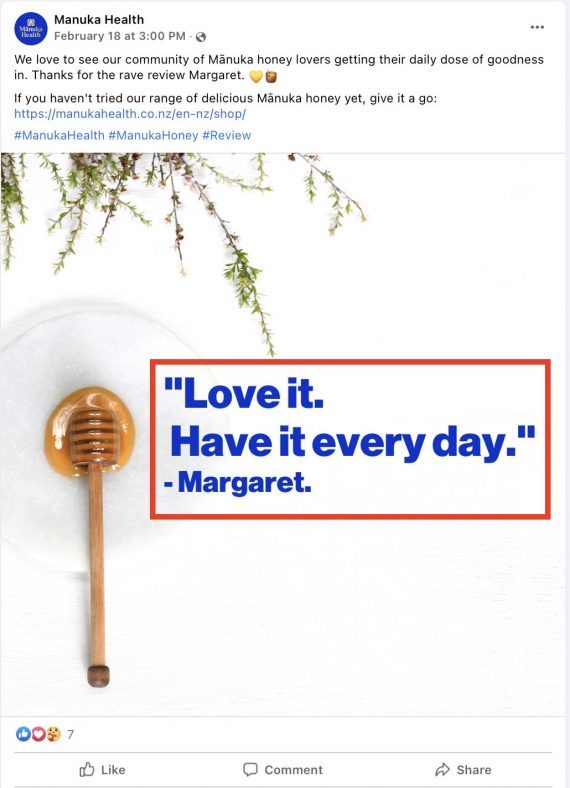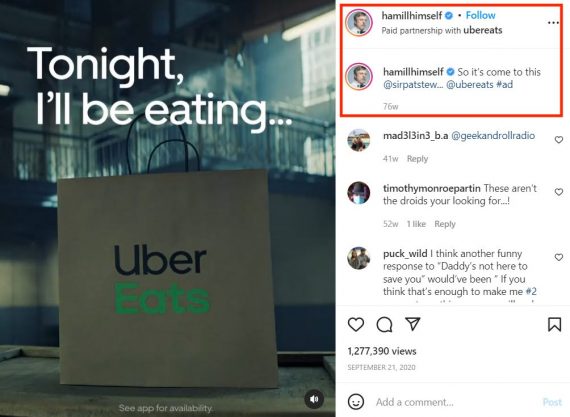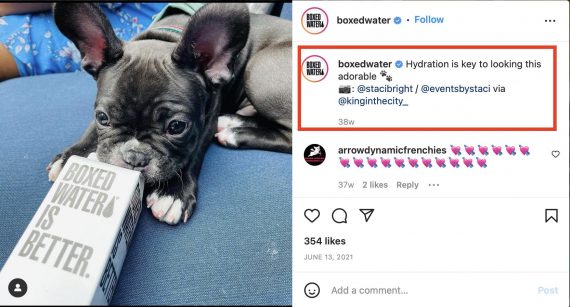Consumers need confirmation that a merchant’s products are trustworthy and worthwhile. Social proof can do that. Testimonials, reviews, endorsements — all reassure would-be buyers.
In “8 Ways Social Proof Sells (Much) More” we addressed the on-site benefits.
In this post, I’ll review off-site examples.
Off-site Social Proof
Testimonials from customers are potent reminders of why someone should buy your products. The best testimonials are short, direct, and authentic.
Glossier, a direct-to-consumer beauty brand, does an excellent job sharing testimonials on its Instagram page. The example below is a consumer showing off her mother’s recommendation for eyebrow makeup.

Glossier shares testimonials on its Instagram page. This example is from a consumer showing off her mother’s recommendation.
Video testimonials are increasingly popular. For example, Sleepy Tie, an overnight hair clasp, shares testimonials on TikTok to good effect.
—
Customer reviews are powerful, especially if the reviewer consents to include her full name and picture.
Here is an example from Manuka Honey’s Facebook page on what not to do. The graphic is appealing, but it does not include the reviewer’s first and last name and photo. As is, the review is only minimally helpful.

Manuka Honey’s Facebook page includes a visually appealing review, but it does not include the reviewer’s first and last name and photo, making it less effective.
—
Expert proof from an industry leader or authority can legitimize a product, as can positive media coverage.
Tesla used this strategy on Twitter to remind consumers that its electric cars could compete with high-end brands when it won a “Best Car Award” in Germany in 2015, 2016, and 2017.

Tesla reminded consumers on Twitter that it won a “Best Car Award” in Germany in 2015, 2016, and 2017.
—
Endorsements from influencers can be effective, but use caution when deploying celebrities. Consumers understand that stars get paid to promote products. Weigh the positive exposure of a celebrity endorsement against the negatives of cost and potential audience misalignment.
Here’s a fun endorsement on Instagram of Uber Eats with actor Mark Hamill.
Research which influencers fit your brand. Focus on their audience and engagement rates. (Our 8-part influencer marketing series can help.)
Backpack company Brevitē promotes an endorsement from software developer Fidalgo. Brevitē markets itself as providing everyday backpacks for any situation. Fidalgo shares his story of using Brevitē’s Jumper backpack.
—
“Wisdom of the crowd” refers to the popularity of a product. It’s a form of FOMO — fear of missing out. Seeing others using a product entices shoppers to buy it, too.
A good example is Spikeball, which combines foursquare with volleyball. The brand’s TikTok page includes posts showing Spikeball participants having fun, with each post generating thousands of views.
Wisdom-of-the-crowd social proof relies on followers’ connections. To implement, focus on branded hashtags and user-generated content to maximize the chances of being seen and shared.
Boxed Water, a drinking water provider with sustainable packaging, uses this strategy in a humorous way on its Instagram feed.








